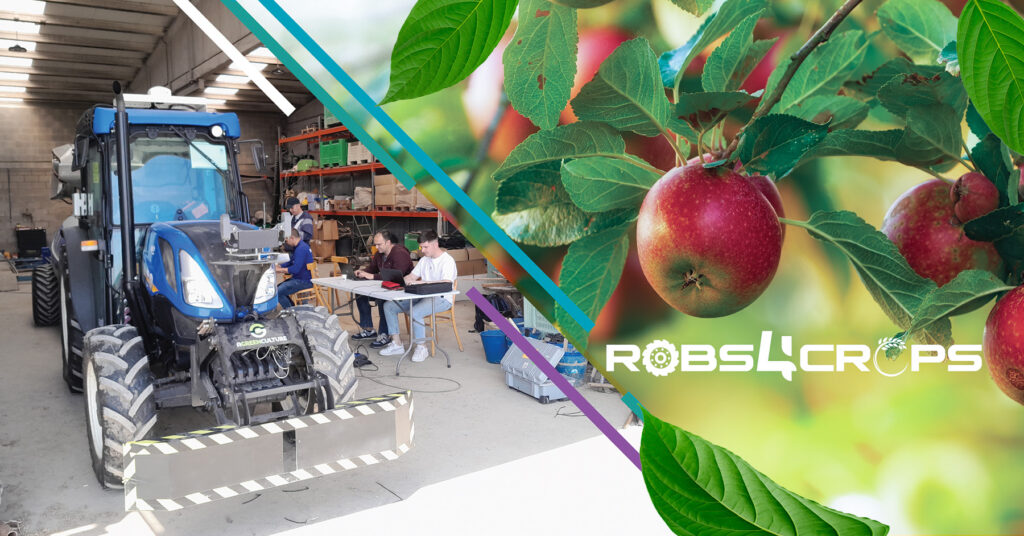Robs4Crops is embarking on an exhilarating journey to transform the apple industry, and our Spanish pilot (Large Scale Pilot #3) is set to unveil a groundbreaking solution. Prepare yourself to witness the awe-inspiring future of farming as we automate the intricate orchard spraying process, addressing the challenges of chemical dependency and the pressing labor shortage. Get ready to be captivated by the revolutionary strides we’re making in agriculture.
What are some of the remarkable advancements made in the field so far?
The field has witnessed extraordinary breakthroughs, particularly in the realm of autonomous tractors. These cutting-edge machines have now achieved the remarkable ability to navigate from one point to another without any human intervention, moving forward with precision and purpose. Moreover, we have triumphantly developed a comprehensive 2D mapping system that faithfully represents the tractor’s surroundings, ensuring a heightened level of accuracy and awareness.
How crucial is collaboration and involving other consortium members in developing groundbreaking solutions?
Collaboration is an absolutely vital aspect of our work, and the consortium members have proven to be exceptional partners in our pursuit of revolutionary solutions. Their unwavering dedication and availability to assist with any queries related to the robotic system make working together effortless. Additionally, when the situation permits, they willingly arrange on-site visits by renting cars, enabling them to tackle challenges firsthand and provide immediate solutions.
As more live tests are conducted in the field, how are farmers adapting to this transformative technology?
The integration of this new technology into farming practices has been remarkably seamless for farmers. The system is designed to be user-friendly and easy to learn, allowing farmers to operate it effortlessly. This simplicity instills a sense of confidence and tranquility among farmers, who are also witnessing the tremendous potential of technology to enhance their productivity and efficiency in substantial ways.
Having completed some tests already, could you share details about the process and what lies ahead?
Our next steps involve two key aspects. Firstly, we aim to establish seamless communication channels between the tractor and the farming controller, ensuring that all pertinent information is efficiently relayed. Concurrently, we are working on enhancing the tractor’s low-level control mechanisms and refining the connection with the farming controller, which must be installed on the tractor itself. These crucial developments will propel us forward and bring us closer to achieving our ultimate objectives.

